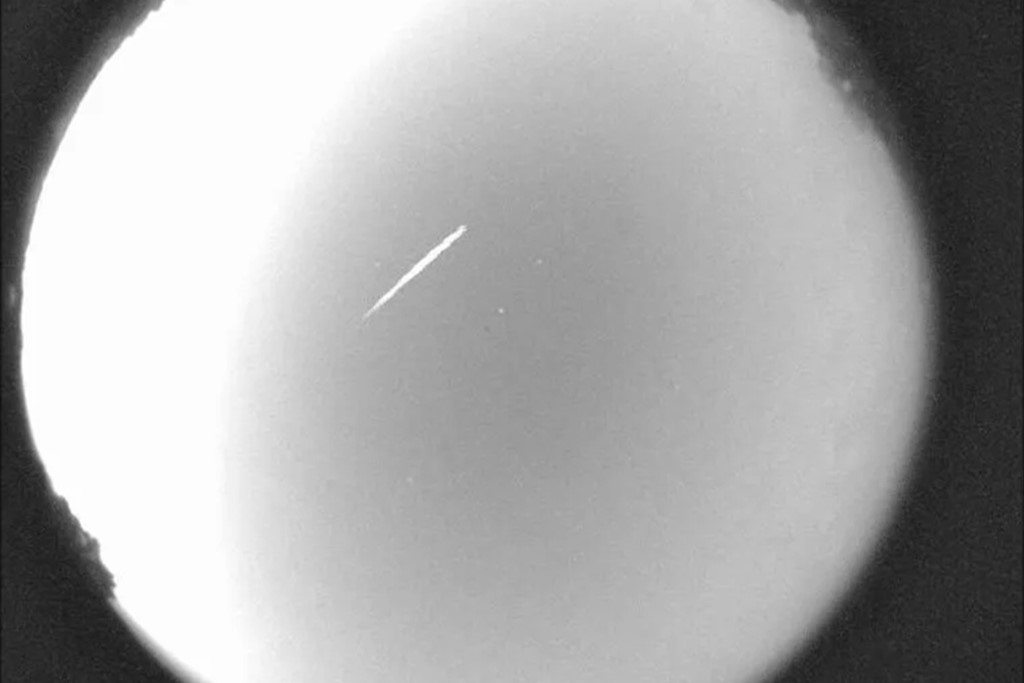ASHEVILLE, N.C. (828newsNOW) —
Halley’s comet left fragments behind on its trek through space, and those bits and pieces are expected to put on a show this weekend as Earth passes through them.
“(The comet) leaves behind dust and ice, and the Earth passes through in its orbit around the sun,” Tim DeLisle explained via phone from Pisgah Astronomical Research Institute (PARI) in Rosman in Transylvania County.
The Eta Aquarids meteor shower started in mid-April and will last until about May 27. But the expected peak is almost here, and it will fall on a weekend with a waning crescent moon, which should make for a great backdrop — if forecast storm clouds cooperate this weekend.
“There’s no specific night that is better than others. But we estimate the peak will be the 5th or 6th of May,” said DeLisle, director of software engineering at PARI.
“So long as it is dark and you are away from light, you’ll be able to see them. There are a lot of places along the (Blue Ridge) Parkway, a lot of overlooks that are perfect for this. Find you a spot and lay back and watch.”
He estimated meteors would be falling at a rate of about 50 per hour during peak.
“But what a human tends to pick up is five to eight per hour,” DeLisle said. “Our advice is to pick a point in the sky that is clear and commit and be patient.”
He said what tends to happen when there is a group of people, “They hear someone say whoa and then look that way and miss what was right in front of them.”
A person with an all-sky fisheye lens could probably see up to 50 meteors an hour, he said.
There’s no certain direction one should look.
“Meteors will be found in every part of the sky,” DeLisle said. “So long as it is dark and you are away from light, you’ll be able to see them.”
But he cautioned people against using cell phones and the apps that help identify constellations.
“Cell phones will ruin your night vision,” DeLisle warned.
Meteor showers get their name from the constellation from which they appear to emanate, he said, and this meteor seems to point toward Aquarius.
“Aquarius, in early May the constellation is rising in the east about 5 a.m.,” DeLisle said. “But you don’t have to get up that early to see it.”
The debris from this meteor shower is from Halley’s comet. We see it every 75-79 years, he said.
Halley’s comet
Meteors come from comet particles and broken bits from asteroids. Every year, Earth passes through these debris trails, which allows the bits to collide with our atmosphere where they disintegrate to create fiery and colorful streaks in the sky, according to science.nasa.gov.
The Eta Aquarids meteor shower is connected with Halley’s comet, which casual observers last saw in 1986. The famous comet will not appear again until 2061.
The comet is officially called 1P/Halley and was named after English astronomer Edmond Halley, who examined reports of a comet approaching Earth in 1531, 1607 and 1682 and concluded the three comets were the same comet and predicted it would return in 1758, according to space.com. Unfortunately, Halley didn’t live to see the comet’s correctly predicted return.
The first known observation of Halley’s Comet was in 239 B.C., according to numerous websites. Another study (based on models of Halley’s orbit) pushes that first observation back to 466 B.C. Halley’s returned in 164 B.C. and again in 87 B.C. A portion of the Bayeux Tapestry shows Halley’s Comet during its appearance in 1066.
Pisgah Astronomical Research Institute has planned a meteor-watching event for Friday night. CLICK HERE to learn more.


